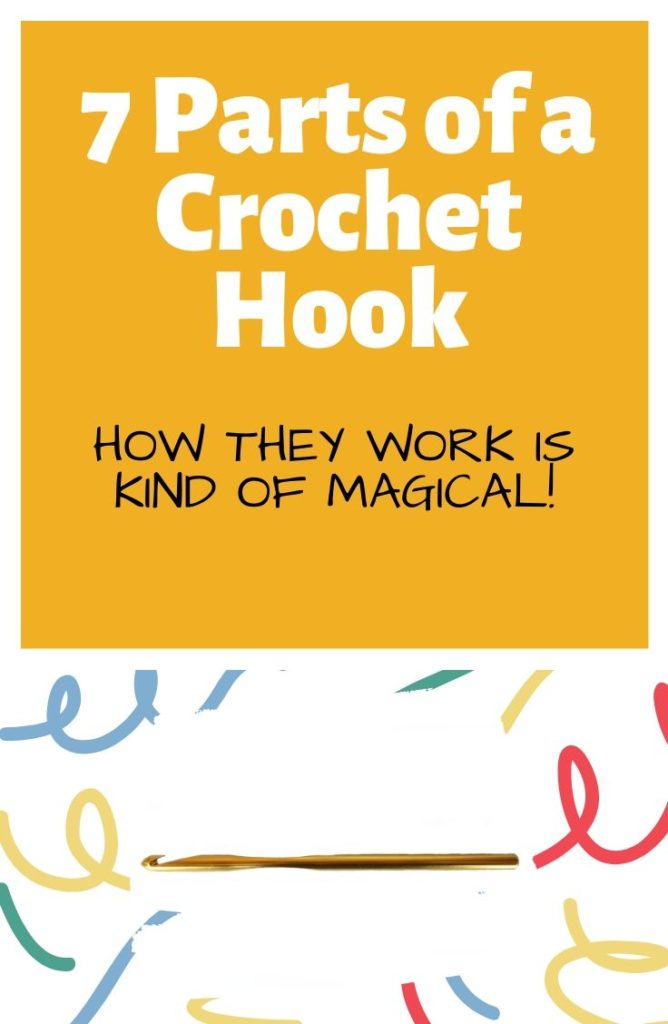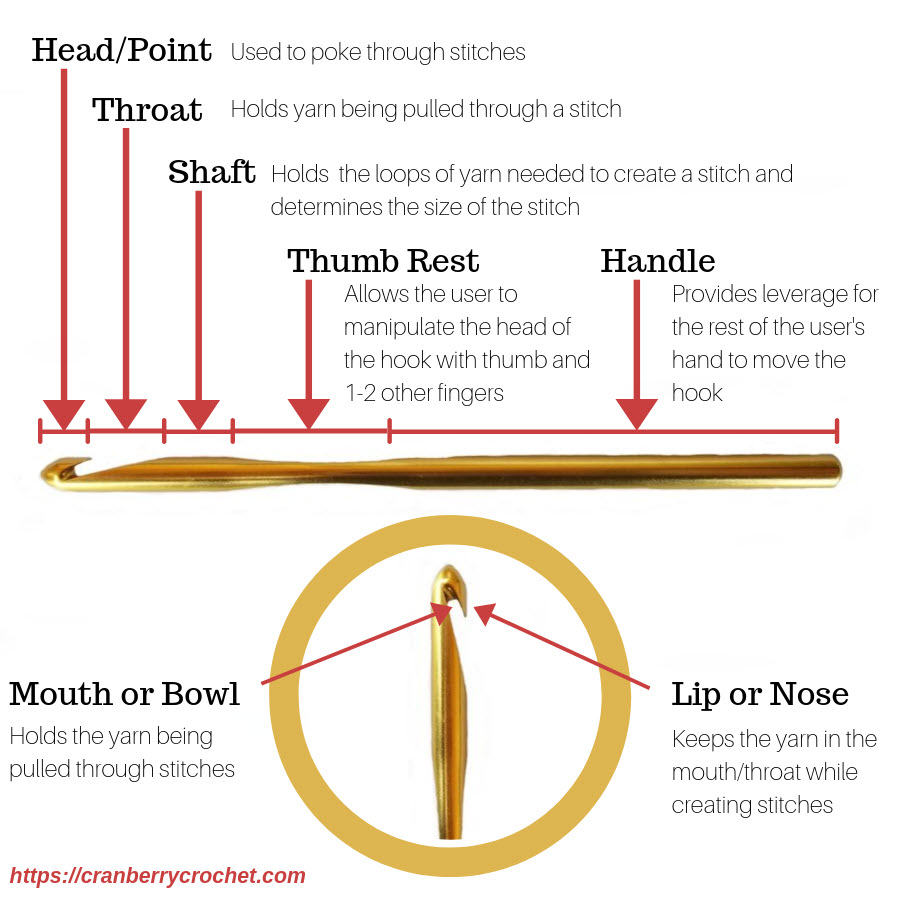
A standard crochet hook consists of 7 parts and each plays an important role in being able to create your finished products.
Knowing this information will help you choose hook styles that will be more comfortable.
Formal classes probably cover this information but if you learned to crochet from a friend or family member these names may have never come up.
For years, I simply went through the motions without understanding how the hook was designed to help create stitches. Now, it’s hard for me to look at any hook without analyzing these different parts.

The head or point is used to poke through stitches so it can grab the yarn from the other side.
The throat is the part that leads from the bowl to the shaft and guides yarn from the bowl to the shaft.
The shaft holds the loops of yarn needed to create any stitch and is the most important part of the hook when it comes to determining the size of your stitches. All crochet hooks have a size – often provided in millimeters. The size of a hook tells you the diameter of the shaft of the hook.
The thumb rest is usually positioned just below the shaft and provides a spot for your thumb and one or two fingers to hold the hook. This area allows your thumb and a finger or two to control the direction of the head of the hook. You can twist the head to point up, towards you, or towards your work as needed to finish a stitch.
The handle is the bottom part of the hook and is either held by your palm or falls in the groove between your thumb and index finger (depending on how you hold the hook) so that you can control the overall movement of the hook.
The mouth or bowl holds your yarn as it is being pulled through other stitches.
The lip or nose keeps your yarn inside the mouth while you’re creating your stitch.
I’ve spent a lot of time looking at a variety of hooks. If you’re interested in more information here is my list of the ones I think are best.
The next time you work on a pattern slow down for a few minutes and watch as each part performs its task. It’s rather magical!
